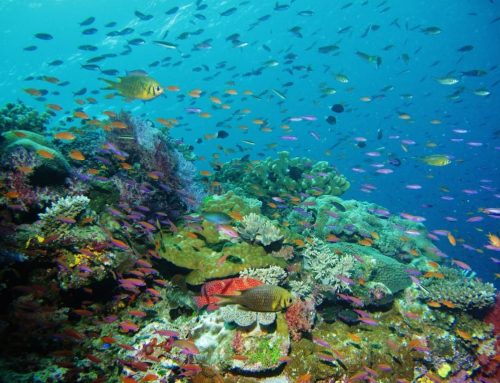Let us begin by saying that we are not willing to get into a debate about whether or not the government should or shouldn’t be able to set plentiful laws about environmental regulations or the use of natural resources. We will leave that to people who are more passionate about politics than we are to debate. However, in the U.S., the government does currently have many agencies and laws that regulate (or at least attempt to regulate) natural resources and environmental policy. If you’re fighting for a cleaner, eco-friendly world, here are ten facts you should absolutely know about U.S. environmental policy.
Fact One: 1970 is the Birthday of U.S. Environmental Policy
You could say that U.S. environmental policy began with the creation of the National Parks system, but it’s probably a better marker to assume the date of 1970 as the birth year of environmental policy action in the United States. That’s the year that the U.S. Environmental Protection Agency (EPA) was formed. While there’s certainly room to debate if the EPA still holds any useful power, throughout the years it has, at points, spearheaded critical environmental policies.
Fact Two: Clean Air Actually Became a Concern Even Earlier
Even before the EPA was formed, President Kennedy signed the first national air-quality act, the Clean Air Act of 1963, in the year noted. However, this clean air act didn’t actually place any regulations on pollution, so one wonders how much of a clean air act it could really have been!
Fact Three: Economic Growth and Preservation of Resources has Always Been a Concern
With all the noise around the issues of jobs, economies and natural resources, you would think that this concern is a modern day issue only. The truth of the matter is that when the Department of the Interior (DOI) was formed in 1845, its primary objective was to seek a balance between economic growth and the preservation of national resources. The DOI includes the Bureau of Land Management, the U.S. Fish and Wildlife Service and the National Parks Service.
Fact Four: There Are Laws to Regulate Mining Discharge
When the water in a southern area of West Virginia became so polluted from an accident in a mining processing location that residents were literally without water, our most essential resource, many assumed that mining activities are barely regulated. Mountaintop mining, in particular, is a concern because of its prevalence in West Virginia. The issue may not be so much whether these activities are regulated as whether or not the regulations are enforced. Mining operations are actually regulated, ironically, under the Clean Water Act (CWA). And coal mining in particular is regulated by the DOI’s Office of Surface Mining and Reclamation.
Fact Five: Fracking, However, Not So Regulated
In large swaths of the country, however, the bigger concern is the seemingly unchecked pollution from hydraulic fracturing (or fracking). Just in case you didn’t know, fracking is the process of extracting natural gas from within the earth’s rock surface. The Energy Policy Act of 2005 actually excluded fracking from regulation under the Underground Injection Control regulations (unless diesel fuel was used). If you visit the EPA’s website, you’ll mostly find information about how we need to learn more about fracking. We might think that’s the kind of thing that you do before going full force into action.
Fact Six: You Can Actually See Industry’s Toxic Pollution Numbers if You Want
Both the EPA and individual states are required to collect annual data on the releases and transfers of certain toxic chemicals from industrial facilities. This data (scary as it is) is actually available to the public through the Toxic Release Inventory report.
Fact Seven: Of Course the Ozone is Being Protected!
Observing daily life, you may think that the government isn’t worried about protecting the ozone at all. While effort and success may be questionable, there is actually a law on the books. Under Title VI of the Clean Air Act, the EPA is actually responsible for programs that protect the ozone. There are even monitoring, importing and enforcement rules!
Fact Eight: The Intent of the EPA is Different Than What You See
The National Environmental Policy Act (NEPA) of 1970, which formed the EPA, actually has requirements and directives that you would love. To quote: Title I of NEPA contains a Declaration of National Environmental Policy which requires the federal government to use all practicable means to create and maintain conditions under which man and nature can exist in productive harmony. Section 102 requires federal agencies to incorporate environmental considerations in their planning and decision-making through a systematic interdisciplinary approach. Specifically, all federal agencies are to prepare detailed statements assessing the environmental impact of and alternatives to major federal actions significantly affecting the environment. These statements are commonly referred to as environmental impact statements (EISs).
Fact Nine: You Might Be Surprised By…
How many voluntary commitments and partnerships the U.S. participates in via the United Nations Sustainable Development programs. You can see them all here.
Fact Ten: Sweden Sets the Bar
If you read Sweden’s governmental plans for improving environmental and pollutions problems, you may decide that the weather there isn’t as bad as you thought and move to be a part of it. Read them here.
Did we miss a fact about environmental policy that you really, really feel that we should have shared? Tell us about it on the social media channels below.
Facebook | Twitter | Instagram | Tumblr | Pinterest | Google+
Photo Credit: Rastoney via Flickr





